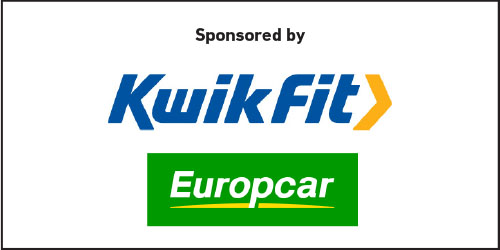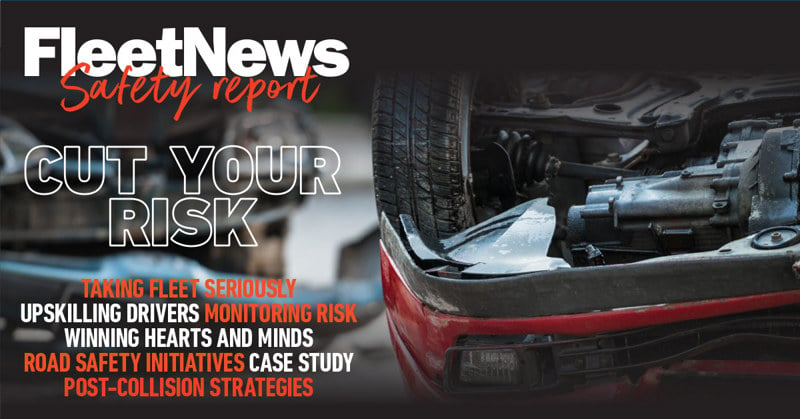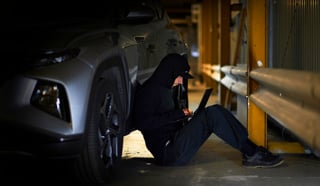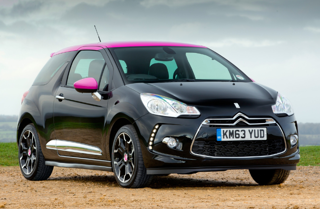This article has been taken from the latest Fleet News safety special report Cut Your Risk. It is sponsored by Europcar and Kwik Fit.

It is said that a chain is only as strong as its weakest link, and if drivers do not buy into a safety programme then it will not have the desired success – however good it is.
One of the potential issues is that some employees, such as engineers who drive between sites, do not consider themselves to be business drivers given it is not the main purpose of their job.
Therefore, they may be reluctant to engage in what they see as driver-specific initiatives.
“If you went out and asked our drivers what they do for a living, they’ll tell you they’re a cleaner, they’re a security person, they’re an M&E (mechanical and electrical) engineer,” says Chris Connors, head of fleet and travel (UK and Ireland) at ISS UK.
“None of them will say they drive for a living. Yet we know that they do drive for a living because they spend a lot of their day driving around.”
This needs to be addressed by ensuring every employee, no matter how much or little they drive for work, knows they are considered to be a business driver.
A key step is to have a clear safe driving strategy, which forms part of the organisation’s driver policy.
This should be included in the driver handbook, which employees should be required to confirm they have read and understood, and also detailed at a new employee induction.
“Induction is such a fundamental opportunity to let your drivers know what is expected of them,” says Alison Moriarty, managing director and head of compliance at Beverley Bell Consulting.
“Because if I start work for you as a driver, and you give me an induction which is all around working hours, what to do if you’re off sick, all this sort of thing, but not specifically about how you expect me to drive, then I am going to think you don’t care how I drive, so, why should I care?”
The safety message should be reinforced by ensuring support, care and tools to manage driving risks are available to them.
Communication is key
The way safety is communicated is also key.
Messages tend to focus on either the legal, moral or financial considerations and can be tailored dependent on what works best for individuals.
“Companies have to do the legal messaging for compliance, but really that’s a box-ticking exercise,” says Simon Turner, campaign manager at Driving for Better Business (DfBB).
“The moral angle is that we are genuinely looking out for your safety. Ask drivers ‘why would you not work with us to make the roads safer for everyone? We want to keep you and your family safe, so please get engaged’.
“A lot of companies, certainly the bigger ones, are focusing on that now instead of the financial angle where we have seen many companies say how much the collisions are costing them.
“A lot of companies actually don’t want to do that now, because some feel that gives the message that they are doing it for their own financial interests, not that they are interested in your safety.”
Tool hire provider Speedy Hire has created three driver safety videos – one for cars, one for vans and another for heavy goods vehicles – to get the message across.
“The videos cover the basics, such as checking the vehicle before setting off. We emphasise looking at the tyres, ensuring there’s enough washer fluid and checking the lights – considerations such as that,” says Aaron Powell, fleet director at Speedy Hire.
The second part of the videos addresses what drivers should do in the event of a collision, emphasising the importance of taking photos of the scene and ensuring they capture everyone’s details.
The third section is much more hard-hitting, and intentionally so.
“It features a police officer sharing his experiences of attending road accidents. He warns ‘if you were on your mobile phone before the collision, we will find out – even if you’ve deleted the messages’,” adds Powell.
“We also include a paramedic who discusses some of the horrific accidents he has encountered, along with a transport lawyer who explains the potential consequences for a driver found at fault, including the possibility of imprisonment.”
Safety: 'I want to shock drivers'
Powell’s ideal outcome is that drivers are genuinely shocked by what they see.
“I want them to realise that they could face time in prison if they are found to be at fault,” he says.
Regular communication is a must to keep safety at the forefront of drivers’ minds.
While any safety messages should be consistent to gain universal buy-in, organisations should be flexible in how they deliver information and in what format, says Nigel Lawrence, strategic partnerships director at Applied Driving.
“Bulletins sent by digital means are highly effective, but some drivers, especially in operational roles, may not have access to email,” he adds.
“Therefore, face-to-face toolbox talks may be appropriate.
“Ideally, communication should be shared monthly, but be prepared to be flexible so as not to disengage by, for example, sending too much information.”
Messages can also be sent directly to employees’ personal digital assistants (PDAs) if they use them.
The DfBB programme is a valuable source of free resources. It includes case studies as well as best practice advice and toolbox talk videos, which can all be distributed to employees.
Last year, it launched its Van Driver Toolkit, which is a series of driver information cards and online modules to assist light commercial vehicle drivers and fleet managers to reduce costs, improve operating conditions and ensure safe and legal vehicles and wellbeing.
“There are more than 36 topics in there now, so there is enough material to send one out a month for three years if you want to,” says Turner.
“We’ve also just restarted a series of monthly fleet focus issues. It was about speed last month, drug and alcohol impairment in December, and winter driving in November.”
DfBB also has articles written by legal specialists aimed at both fleet managers and drivers which are designed to be distributed to employers and employees.
Using gamification
Harnessing drivers’ competitiveness to engage them in improving safety standards is also becoming increasingly widespread.
This is usually done by using telematics data to produce league tables with prizes – such as gift tokens – given to the best-performing or most-improved drivers.
“The ethos of gamification is to provide visibility and transparency that encourages competitiveness and creates a positive environment, rather than one based on blame and punitive actions,” says Lawrence.
“Where it can really come into its own is when it is paired with a reward or recognition programme. In combination, this typically generates a greater desire to achieve, improve and strive to become the safest driver in the fleet.”
A successful strategy will rely on gaining buy-in at senior level, with goals agreed at the outset, which is communicated to all stakeholders, he adds.
“Make it clear what you are implementing,” says Lawrence. “Why are you doing it? What are the benefits to the drivers as well as to the business. And how can they help shape long-term outputs?
“Then you need to decide how to distribute positive messaging around the success of the strategy, celebrate best practice and foster continued buy-in.”
Safety continues to be among the top priorities for a fleet decision-maker, but it can be a complicated and time-consuming subject to navigate.
Our new Fleet Safety Report aims to simplify this with a focus on a number of key issues, beginning with the reasons – such as moral, legal, operational and financial – why it should be taken seriously.
Employing case studies and industry experts, we also look at how an organisation can ensure its drivers are given the necessary skills to reduce incidents through a robust training strategy, the use of telematics and in-cab cameras to monitor and reduce risk, and how a fleet manager can win buy-in from drivers for new initiatives.
Other topics we investigate are post-collision strategies - what a fleet manager and driver should do after an incident to minimise the likelihood of a similar crash happening again, as well as how to reduce costs and vehicle downtime – and national initiatives which will have a future impact on collision rates.
This includes measures as simple as not referring to crashes as ‘accidents’, as well as the expected publication of a national road safety strategy in the spring.
The report, sponsored by Kwik Fit and Europcar, also features a case study of how a serious road collision led to an engineering company introducing new technologies to improve fleet safety.

























Login to comment
Comments
No comments have been made yet.